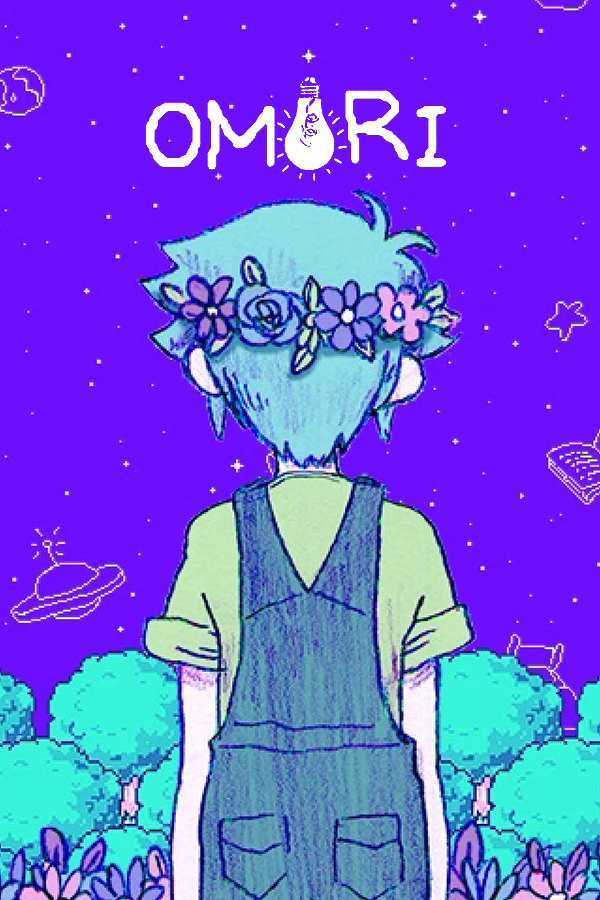

And, for something new, once you’re damaged by enemies, there are opportunities to do additional actions after your turn starts, which makes combat a little more hands-on than other turn-based RPGs. For new abilities, y ou can only bring four kinds of skills into battle, which requires you to switch between whichever ones you prefer using once you learn more than four. For new status effects, there are emotional effects that can be inflicted on anyone and each one has advantages or disadvantages over another in addition to changing you or your opponent’s stats. Battles are easily the most interesting and deep part of the game, and I loved what it added to the usual RPG systems. Since it doesn’t add much to the traditional RPG formula aside from the horror, the gameplay of OMORI varies like its story and presentation. The sound design for more horror-based areas was really awesome, and I think those sounds are probably the most memorable parts of the music for me. The lack of expressiveness and movement made the overworld get tedious to look at.Īs for the music, there weren’t many tracks that stood out for me, but it was definitely pleasant to listen to. I think if everything were just a little more zoomed in and more detailed, many of these overworld problems could have been avoided. The environments looked very colorful, but, like the characters, everything felt too zoomed out, which put a lot of things on the screen at the same time. The pixel art style looked too small to be as expressive as other indie pixel art has done, and the overworld animations looked strange at times because the sprites were so small that animating their legs or arms made it seem like their limbs were growing longer whenever they did an action. Outside of battle though, things didn’t look as great to me. During battles, the game looks great with OMOCAT’s stylistic visuals utilized for each party member and all the enemies you find in the game. The font also looks great, which is a small touch that goes a long way in a traditional RPG with so much text like this. The UI was very snappy and responsive with nicely color-coded menus in battles and satisfying sound effects. The presentation in OMORI, like the story, felt great at times, but inconsistent at others. But, the stories of both worlds came together by the end to make something really great. The story and characters within Headspace didn’t feel as interesting to me as those of the other world did, which made the game feel inconsistent. The story of Headspace eventually got better as things in the other world did, but Headspace never really felt as engaging as the other world did until the very end. I felt like I was just playing through filler episodes in Headspace to see more of the characters I wanted to see again in the other world after a certain point. This was the first thing that started making the game tedious for me. The characters there didn’t really make the world seem lived in, so it didn’t make me feel compelled to talk to many of them. The story and characters in Headspace include things and people that connect to the more interesting other world, but, to me, Headspace didn’t really contain an interesting world by itself. The story and characters of the other world are interesting and felt more meaningful whereas the interactions in Headspace felt more one-dimensional. The game is divided up into two worlds with most of the game taking place in Headspace and other parts taking place in the other world. OMORI involves finding out a story that has already happened by experiencing the results of that story throughout the game’s world, a place called the Headspace. OMORI’s story is great overall, but it isn’t consistent. Who knows why it took almost seven years to release on Steam with a release planned for the Nintendo Switch soon, but was it worth all that time in the oven? OMORI deserves a lot of praise for what it does get right because it really nails some parts very well, but, when it comes to others, OMORI can get tedious to play through. It was Kickstarted in 2014 and hit almost 1000% of its initial goal because people really seemed to enjoy the concept and art style created by the game’s director and artist, OMOCAT. Have you heard of OMORI? This indie-developed psychological horror RPG has been in development for a while despite releasing only a week ago. OMORI (Steam) – The Turn-Based Fear Fighter – Review


 0 kommentar(er)
0 kommentar(er)
